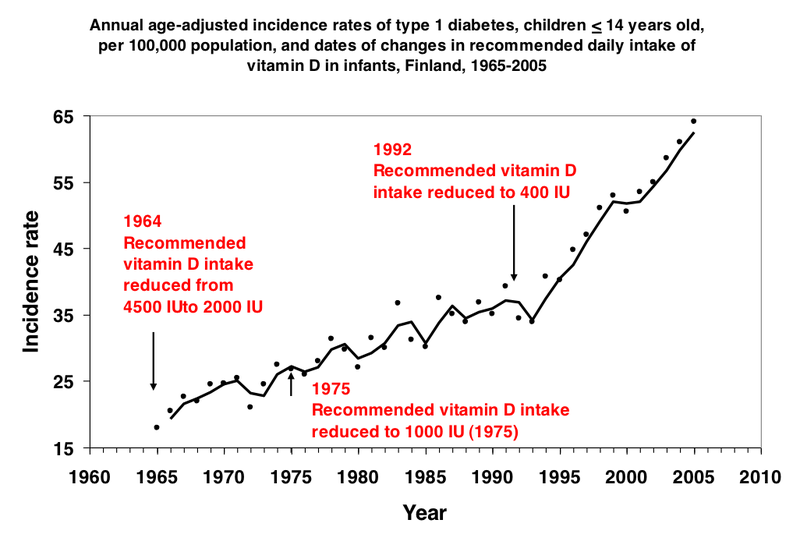Vinegar, lemon juice and lactic acid fermented fruits and vegetables can reduce blood sugar spikes, lower the glycemic index of foods being fermented and can cause weight loss. Information on how to make lactic acid fermented foods.
 January 29th 2005 – Acidic Foods, Fermentation and Blood Sugar
January 29th 2005 – Acidic Foods, Fermentation and Blood Sugar
copyright by Karen S. Vaughan, L.Ac.,MSTOM
Eating acid foods- vinegar, lemon juice or lactic acid fermented foods- can reduce blood sugar spikes after meals, giving glycemic control comparable to Metformin. It has the greatest effect in people who are at risk of diabetes but still test within normal ranges. As such it is a good practice for all meals, and reflects traditional practices of most ethnicities.
Nutritionist Carol S. Johnston of Arizona State University East in Mesa has found that 2 tablespoons of vinegar before a meal can dramatically lower the increased insulin and blood sugar (glucose) levels that typically occur in people who have type 2 diabetes. In her study, she looked at 29 people divided into type 2 diabetics, diagnosed pre-diabetics, and a control with no signs of diabetes. Measuring blood levels after a high-carb breakfast, Johnston found that vinegar improved the readings for all 3 groups, but results were most dramatic among those who were prediabetic. In their case, vinegar cut their blood sugar increase in the first hour after eating by as much as half, a greater reduction than was found with normal participants. Diabetics lowered their blood glucose levels by 25% with the vinegar. The study was a crossover, placebo-controlled study.
In another study, Johnston had half the volunteers take a 2-tablespoon dose of vinegar prior to each of two meals daily for 4 weeks, and the other group members were told to avoid vinegar. Interestingly, the vinegar users had an average 2 pound weight loss over 4 weeks (as much as 4 weeks in some participants), compared to constant average weight in the group not drinking vinegar. There was no improvement in cholesterol, whcih was tested as a likely mechanism for the blood sugar control.
A 2001 paper from Lund University in Sweden evaluated pickles—cucumbers preserved in vinegar—as a dietary supplement to lower the blood-sugar rise in healthy people after a meal. The Swedish team, led by Elin M. Östman, reported that pickles dramatically blunted the blood-sugar spike after a high-carb breakfast. Fresh cucumbers didn’t affect the blood sugar spike.
Traditionally pickled vegetables like sauerkraut, pickles, olives, kimchee, and other lactic and acetic acid fermented foods were served with meals to improve digestion. The probiotic bacteria in these foods as well as the acetic acid can reduce digestive problems. Note that actual vinegar or pickled foods seem to do the trick but vinegar supplements don’t work, because they don’t contain acetic acid, which, based on studies, is the ingredient Johnstons suspects is helping control blood sugar. (1)
Fermented foods also reduce blood glucose levels. The natural fermentation of starch and sugars by a yeast starter culture that produces lactic and propionic acid is what makes sourdough bread. In a third study the glycemic index of sourdough bread was 68 compared 100 for non-sourdough bread. Cornmeal loses 88% of its glycemic index when fermented into the Ghanain dish ga kenkey. Fermented vegetables are a traditional component of Korean, Japanese and traditional European cooking.
Rick Mendoza’s site quotes a woman who tried lactic acid fermentation (fermentation with whey instead of vinegar) of beets and apples and recorded their effect on her mother’s blood sugar after 2 hours. Normally beets and apples will cause her blood sugar to spike, but when fermented they had no effect on the blood sugar. The fermented apples were cooked into apple sauce and did not cause a sugar spike either. (2)
Other acids are believed to be similarly effective. Lemon or lime juice in water can reduce blood glucose, according to Professor Jennie-Brand Miller of the University of Sydney, author of the glycemic index. (3) Kombucha is a vinegar made by fermenting tea and sugar with a gelatinous “mushroom” mother culture drunk for health reasons and its benefits may be due to similar mechanisms.
Note that taking vinegar in salad dressing, over meat or in pickled food may be perferable to the taste of drinking vinegar. However I routinely drink blueberry or balsamic vinegar diluted in a cup of water and the taste is not objectionable. Lemon or lime juice in water before breakfast is excellent for the liver and may be more readily accepted in the morning.
Sally Fallon’s excellent cookbook, Nourishing Traditions (4) describes making lactic acid fermented vegetables or fruits which will convert the starches and sugars of fruits and vegetables into lactic acid and creates beneficial enzymes. The lactobacilli are ubiquitous, present on all living things, especially on leaves and roots. However with our long term transportation of food, it is better to add the whey drained from live plain yogurt.
Chop the vegetables and lay in a clean mason jar. Add 2 Tablespoons whey and 2 teaspoons sea salt per cup of water. Fill to within an inch of the top of the jar and tightly cap as lactic acid fermentation is an anerobic process. Leave in a warm room for two days, then move to cold storage. The vegetables can be eaten at once but develop better flavor in 2 months. They are meant to be eaten as condiments rather than as main courses. Don’t worry about white scum or foam which may form on the top. If a batch goes bad it will smell so bad that nothing could persuade you to eat it.
If the vegetables get soft, throw them into a soup stock made with bones from organic meat and boil down to make the mineral-rich gelled stock that helps prevent blood sugar spikes and lowers the glycemic index of the carbohydrates that accompany it. The acid will help pull the gelatin out of the bones and the minerals from the vegetables.
Resources:
(1) http://www.sciencenews.org/articles/20050101/food.asp
(2) http://www.mendosa.com/acidic_foods.htm
(3)Brand-Miller, Jennie, Kaye Foster-Powell, and David Mendosa. “What is the advantage of vinegar, lemon juice, and sourdough bread?” in What Makes My Blood Glucose Go Up…and Down? New York: Marlowe & Company, 2003, p. 141-2.
This is by far the most extensive discussion of the advantage of acidic foods in the popular literature
(4) Fallon, Sally, Enig, Mary and Connolly,Pat. Nourishing Traditions: The Cookbook that Challenges Politically Correct Nutrition and the Diet Dictocrats. San Diego: ProMotion Publishing. pp81-109
Contact Member:
Acupuncture and Herbs by Karen Vaughan, L.Ac.
253 Garfield Place 1R
Brooklyn, NY 11215 US
(718) 622-6755
Credits:
Rick Mendoza, Sally Fallon
 4 people like this post.
4 people like this post.




 March 25th 2006 – Copyright by Karen Vaughan, L.Ac., MSTOM, RH (AHG)
March 25th 2006 – Copyright by Karen Vaughan, L.Ac., MSTOM, RH (AHG)
 January 29th 2005 – Acidic Foods, Fermentation and Blood Sugar
January 29th 2005 – Acidic Foods, Fermentation and Blood Sugar